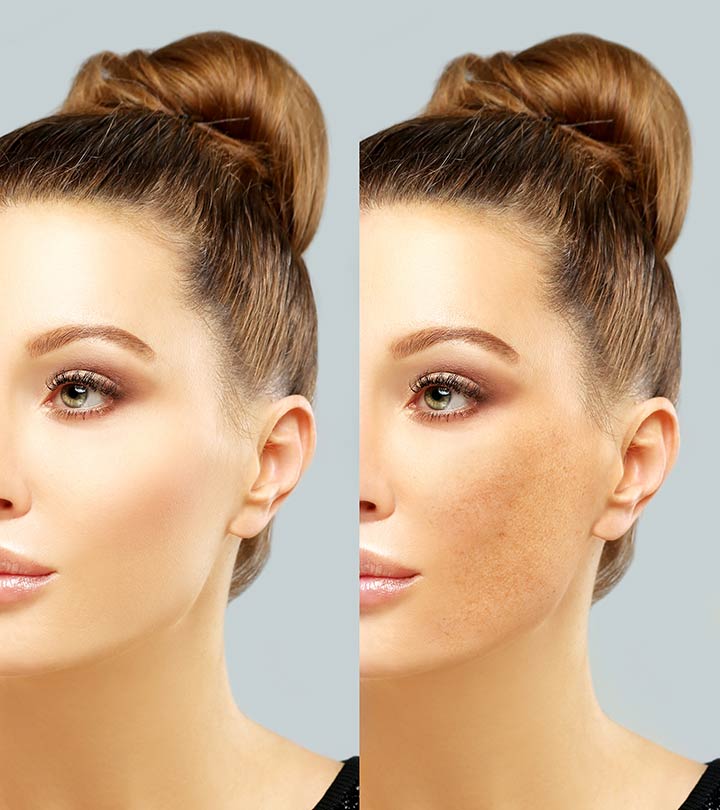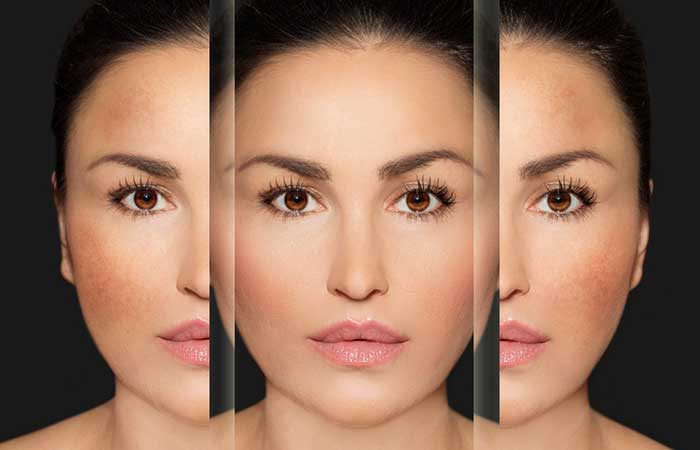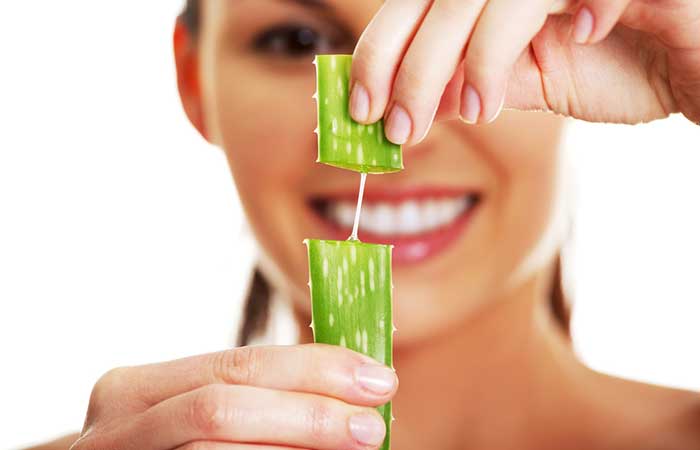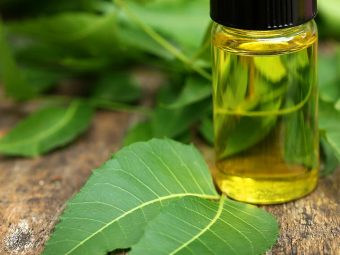How To Prevent Pigmentation (Melasma) During Pregnancy
Effective techniques to limit the appearance of pregnancy-induced pigmentation.

Pregnancy is a beautiful journey. But there are several things that you may not enjoy during this phase, like pigmentation during pregnancy or melasma. Melasma often appears during pregnancy and is considered frustrating and annoying. However, it is a common condition that is not a cause of concern.
Also, you can manage melasma easily. Wish to know how to manage it? Let us find out. Scroll down!
In This Article
What Is Melasma?
Also known as chloasma, melasma is a skin condition in which you get brown patches or spots on your skin. Since it is a common issue in women, especially dark skinned women, anyone can get this condition (1). Melasma is also known as the ‘mask of pregnancy’ when it appears in pregnant women.
Melasma usually appears on your face in three patterns:
- Centrofacial: affecting your nose, forehead, and upper lips
- Malar: affecting your cheeks
- Mandibular: affecting your chin and jawline
One study says that centrofacial pattern is the predominant pattern that appears in 50-80% of the cases of melasma (2). Pigmentation and discoloration may also appear on your neck and shoulders. While it is not harmful, women tend to become a bit self-conscious about their appearance.
So, do you need to be scared of any spots or marks on your skin? Definitely not. There’s a very subtle difference between melasma and hyperpigmentation. Here’s what you need to know…
Melasma And Hyperpigmentation: What’s The Difference?
Many of you may confuse melasma with hyperpigmentation. Well, let me clarify one thing here. Hyperpigmentation is a very broad term, and it refers to any skin condition in which skin discoloration or dark patches may appear due to any number of factors. For instance, scarring caused by acne, pimples, or boils and marks caused by sun exposure, eczema, or psoriasis – all come under hyperpigmentation. This means any discoloration of skin can be called hyperpigmentation.
Melasma is a bit tricky. It is a type of hyperpigmentation that is mainly triggered by UV exposure and hormonal factors. Compared to traditional hyperpigmentation (which lingers on the top surface of the skin), melasma is much deeper (it can go deep into your skin’s layers) and tough to treat. Let’s explore its causes in detail.
What Causes Melasma During Pregnancy?
The exact cause of melasma is not entirely understood (3). But experts believe that UV exposure is one of the main factors that cause melasma. Several other factors are also believed to trigger melasma during pregnancy. These include:
- Birth control pills
- Hormone therapy
- Race
- Anti-seizure medications
- Family history of melasma
Another study, however, blames your hormones for wrecking your skin with spots and pigmentation. It found that high levels of hormones, such as progesterone, estrogen, and melanocortin, triggered melasma during pregnancy. It also found that women who use oral contraceptives were susceptible to this condition (4). Another study found that women with hypothyroidism also suffered from this condition (5).
This means any one factor or a combination of multiple factors, along with UV exposure, can cause melasma. It may go away after childbirth (if caused by your hormones), or it may take a few months’ time and treatment. If you notice any skin discoloration or patches that are darker than your skin tone, consult a dermatologist for proper diagnosis.
Melasma Diagnosis
Usually, a dermatologist can determine whether it is melasma or not by merely running a visual examination. However, they may perform several other tests to rule out any other underlying factors.
When diagnosing melasma, the doctor may also perform a Wood’s Lamp Examination. In this procedure, a particular type of light is held close to your skin to determine whether your skin is affected by any fungi and bacteria. It also helps in determining how many layers of your skin are affected by melasma.
How To Prevent Melasma During Pregnancy: Treatments And Remedies
When treating this particular type of hyperpigmentation during pregnancy, remember that the results may differ from person to person. For some women, melasma may disappear without any treatment (after they deliver the child or stop taking contraceptive pills), and for some, it may not go away that easily.
Dermatologists usually prescribe medicines such as:
- Hydroquinone
This medicine is widely used for treating melasma. Hydroquinone is available in gel, liquid, cream, and lotion forms. When applied topically, this medicine helps in fading the marks. Most of the creams containing hydroquinone are available over-the-counter. However, for some, you may need a doctor’s prescription. Generally, over-the-counter creams contain less amount of hydroquinone. Anything stronger than that requires a prescription.
- Tretinoin And Corticosteroids
Dermatologists often prescribe tretinoin or corticosteroids along with other medicines. This is just to enhance the effect of skin lightening. If the melasma is severe, dermatologists may suggest a cream that contains hydroquinone, tretinoin, and corticosteroids.
- Other Medicines
The doctor may even prescribe kojic acid or azelaic acid to lighten the spots.
If medicines do not work on your skin and are not effective, there are other procedures to treat the condition. The possible options include:
- Chemical Peeling
In this process, the doctor applies glycolic acid or a similar abrasive chemical on the affected area. This creates a mild chemical burn on that surface. The burned layer is then peeled off, exposing fresh skin that is devoid of spots. However, if hormonal issues are the cause of your melasma, chemical peeling may not work unless you resolve your hormonal imbalance.
- Dermabrasion And Microdermabrasion
Both are medical procedures where the doctor uses an abrasive material to sand off the top layer of your skin. They use a machine to exfoliate your skin and strip away the dead skin cells, thus gently lifting and removing the affected layer of your skin. You may have to undergo multiple sessions to treat your melasma thoroughly.
- Laser Treatment
Laser treatments can be restorative or dual fractional and target only the affected area. However, this treatment is pretty expensive, and you may need multiple sessions to eliminate melasma completely.
No medication or cosmetic procedure will work if your hormones are causing the condition. Moreover, no treatment can offer permanent results. So, the best thing is to do is to take preventive measures so that the melasma does not return. Now, your hormones are not in your control, so you cannot actually do anything if they are the cause of your melasma. But otherwise, you may take the following measures to keep your skin safe from hyperpigmentation during pregnancy:
1. Use Sunscreen Whenever You Go Out
UV exposure is your skin’s biggest enemy, and because it is one of the factors that trigger melasma, wearing sunscreen is a must. Always use a sunscreen that has a broad spectrum and an SPF of 30 or more.
2. Use Broad-Brimmed Hats And Umbrellas
Apart from sunscreen, wearing a broad-brimmed hat or carrying an umbrella also helps in shielding a major portion of your exposed skin. Whenever you are outside, try to stay in the shade.
3. Don’t Stress Out!
Stress worsens melasma. So, even if you notice spots and pigmentation on your skin, do not freak out. Relax and try remedies to treat them. To reduce stress, you may even consider meditation, listening to music, or just treat yourself to a bubble bath.
4. Use Your Medicines Without Fail
Use the medicines prescribed by your doctor regularly and at intervals suggested by them. This will help get rid of the spots faster.
You need to be diligent with these preventative measures. Though you may need to consult a dermatologist for melasma, you can easily rely on home remedies for treating any other form of hyperpigmentation. Here are a few ingredients that you can use to get rid of spots and marks.
Home Remedies For Hyperpigmentation
1. Lemon
Lemon contains citric acid, which makes it an excellent skin whitening agent. It also reduces dark spots and blemishes (6).
You Will Need
- 2 tablespoons fresh lemon juice
- Water
- Cotton balls
What To Do
- Dilute the lemon juice with some water.
- Dip the cotton ball in it and apply to the affected area.
- Leave it on for 15 minutes before washing it off.
Note: Lemon juice may cause irritation – so, use it in small amounts.
2. Potato
Potato contains azelaic acid, which helps in reducing tyrosinase activity. This helps in reducing spots and pigmentation (7). Azelaic acid is also often prescribed for melasma. So, you can use potato for treating melasma and any other form of hyperpigmentation.
You Will Need
1 raw potato
What To Do
- Grate the potato and squeeze out its juice.
- Apply the juice to the spots and let it dry.
- Wash off with lukewarm water.
- Repeat every day.
3. Turmeric
Turmeric contains curcumin that reduces melanoma cells, thus lightening your dark spots and blemishes. It also helps in reducing tyrosinase activity (8).
You Will Need
- 1 teaspoon raw turmeric paste
- ½ teaspoon diluted lemon juice
What To Do
- Mix both the ingredients and apply the paste to your face.
- Leave it on to dry before washing it off.
- Repeat until the spots vanish.
4. Aloe Vera
Aloe vera contains aloin, an ingredient that has skin lightening effects (9). It also removes dead skin cells and boosts cell regeneration.
You Will Need
1 teaspoon fresh aloe vera gel
What To Do
- Apply aloe vera gel to the affected areas before going to bed.
- Leave it on overnight and wash it off the next day.
- Follow this religiously every day.
5. Orange Peel
A study has proven that orange peel powder has anti-tyrosinase activity that can reduce dark spots and whiten the skin (10).
You Will Need
- 1 tablespoon orange peel powder
- 1 teaspoon milk
- 1 teaspoon honey
What To Do
- Mix all the ingredients and make a paste.
- Add water if the consistency is too thick.
- Apply it to the spots and leave it on for 20 minutes.
- Wash it off later.
6. Soy
Soy contains phospholipids, isoflavones, and soybean trypsin inhibitors (STI) that can inhibit the activity of trypsin and melanogenesis, thus reducing hyperpigmentation (11).
You Will Need
- 1 tablespoon soy milk
- 1 tablespoon lemon juice
- 1 tablespoon tomato juice or pulp
What To Do
- Mix all the ingredients in a bowl.
- Apply the paste to the affected area or the entire face.
- Gently massage for 10 minutes. Leave it on to dry.
- Wash it off.
7. Licorice
Licorice can inhibit melanin and inhibit cyclooxygenase activity, thus reducing the production of free radicals. It also contains glabridin that prevents pigmentation induced by UV ray exposure (12).
You Will Need
- 1 tablespoon licorice powder
- 1 teaspoon red sandalwood powder
- 1 teaspoon honey
- 1 tablespoon rosewater
- 1 teaspoon yogurt
What To Do
- Mix all the ingredients to make a paste.
- Apply all over your face or just the affected area. Let it dry.
- Wash with water.
8. Pomegranate
Pomegranate contains ellagic acid, which is an antioxidant that prohibits melanin production and reduces hyperpigmentation (13).
You Will Need
- 2 tablespoons pomegranate juice or powder
- 1 tablespoon bentonite clay
- Water (in case you are using pomegranate powder)
What To Do
- Mix both the ingredients in a bowl.
- Apply to the affected area and leave it on for 20 minutes.
- Wash it off.
9. Cranberry
Cranberries contain arbutin, which is a natural derivative of hydroquinone. Therefore, it can effectively reduce hyperpigmentation (14). You can even use it for treating melasma.
What You Need
- 1 cup cranberries
- 1 tablespoon cinnamon powder
- 1 teaspoon manuka honey
What To Do
- In a food processor, blend all the ingredients to make a paste.
- Apply the paste all over your face or just on the affected area.
- Let it dry and then wash off.
10. Yogurt
Yogurt contains alpha-hydroxy acids or AHAs, which are widely used for chemical peeling. It also contains citric and glycolic acids that help in reducing hyperpigmentation (15).
You Will Need
- 1 tablespoon yogurt
- 1 teaspoon honey
- 1 teaspoon oats (finely ground)
What To Do
- Mix all the ingredients.
- Apply the mixture all over your face.
- Leave it for on 20 minutes before washing it off.
Melasma and hyperpigmentation during pregnancy are pretty common. You don’t need to get scared if spots appear on your face and other parts of your body. While you may not be able to get rid of melasma completely and there is no assurance that it will not recur, you can keep the spots away with proper care and preventive measures.
Melasma and pigmentation during pregnancy are caused by several factors, one of which is UV exposure. Therefore, if spots occur on your face or other parts of your body, do not be alarmed. While you may need to see a dermatologist for melasma, you can treat any other type of hyperpigmentation using home remedies. However, you may not completely eliminate melasma, and there is no guarantee that it will not return. So, all you do is, keep the spots at bay with good treatment and prevention.
Frequently Asked Questions
Does melasma affect my baby?
No, melasma will not affect your unborn baby or pregnancy outcomes.
What vitamins are good for melasma?
Vitamins A, C, and E are commonly used to manage melasma. A deficiency in vitamin B12 has been associated with the occurrence of melasma, so it may be included from dietary sources during pregnancy as a preventive measure (16).
What foods make melasma worse?
Foods such as soy, flaxseeds, chickpeas, and black beans contain chemical estrogens and may contribute to hormone-induced hyperpigmentation, such as melasma.
Can low iron cause melasma?
Research suggests that there may be an association between low iron levels and melasma (17). However, more studies are warranted in this regard to further understand the link and get more conclusive evidence.























